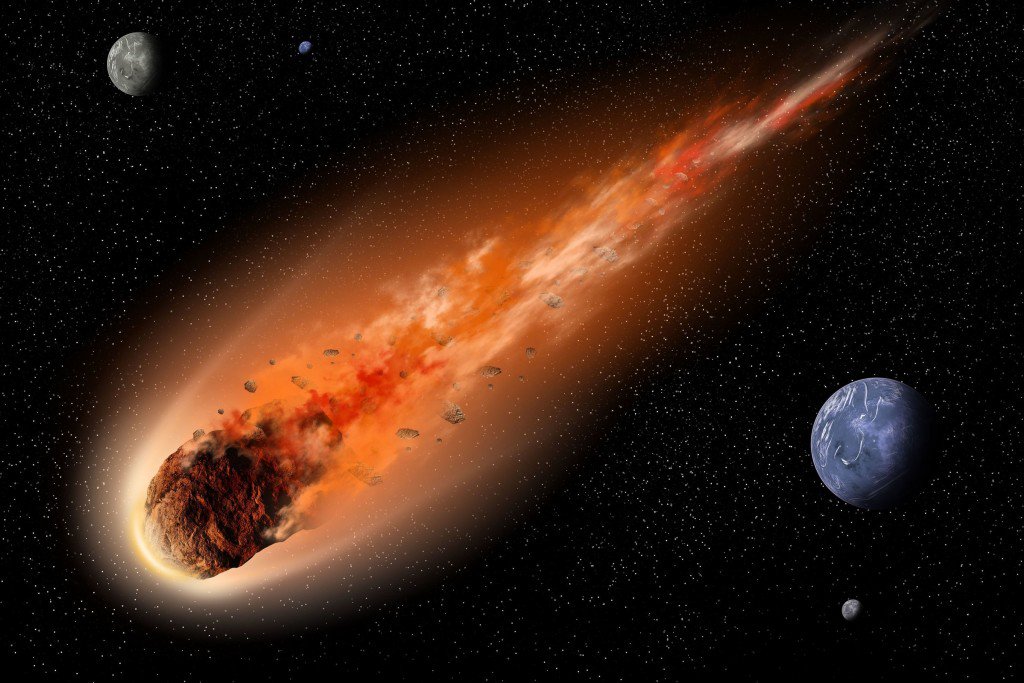29.WHAT IS AN ASTEROID?
The discovery of things in the heavens often comes about much like the solving of a mystery. This is the way the asteroids were discovered.
Two men, Titius and Bode, had at different times figured out that there must be a planet between Mars and Jupiter; there was such a large gap in the distance between them. So several astronomers set about searching for this planet.
In 1801, a planet was actually found there. It was named Ceres, but is was a very tiny planet indeed, with a diameter of only 480 miles. So it was believed that it could be only one of a group of small planets and the search went on.
In time, three more tiny planets were found, the brightest of which was only half the size of Ceres. Astronomers decided that a larger planet must have exploded and left these four tiny pieces. But after 15 years of searching, another astronomer found still another tiny planet and this started the hunt again.
By 1890,300 small planets had been found, and between 1890 and 1927, 2,000 had been discovered! These tiny planets, all rotating around the sun in the area between Mars and Jupiter, are called asteroids.
To indicate how small they are, l 95 of them have diameters of more than 61 miles; 502, between 25 and 61 miles; 193, between 10 and 25 miles; and 22 of them have diameters of less than 10 miles!
If the mass of all the asteroids were added together, it would only be 1/3000 of that of the earth. So even if all the asteroids were united, they would form an insignificant planet.
As to how the asteroids were formed, the theory is that a satellite of Jupiter exploded and created these fragments.
28.WERE THE CONTINENTS EVER JOINED TOGETHER?
Take a look at a map of the world. Now look at the two continents of South America and Africa. Do you notice how South America sticks out to the right where Brazil is, and how Africa is indented on the left side? Doesn t it seem as if you could fit them together like a puzzle and make them one continent?
Well, 50 years ago a German scientist named Alfred Wegener was doing just that. He wrote: “He who examines the opposite coasts of the South Atlantic Ocean must be somewhat surprised by the similarity of the shapes of the coastlines of Brazil and Africa. Every projection on the Brazilian side corresponds to a similarly shaped indentation on the African side.”
Wegener also learned that naturalists had been studying the prehistoric plant and animal life of South America and Africa and had found many similarities. This convinced him that these two continents were once attached and had drifted apart.
He formulated a theory which he called the theory of the displacement of continents. According to this theory, the land masses of the earth were once all joined together in one continuous continent. There were rivers, lakes, and inland seas. Then fpr some unknown reason, this land mass began to break up. South America split off from Africa and drifted away. North America split off from Western Europe and floated to the west. All of the continents as we now know them were thus formed.
Did this actually happen as Wegener says it did? We don’t know. It’s only a theory. But as you can see from the map, there is some evidence to support it. And the study of prehistoric plant and animal life makes it seem possible, too. Besides, the earth’s crust is still shifting today. So perhaps Wegener was right!
27.HOW WAS THE PLANET PLUTO DISCOVERED?
If you think it’s hard to find a needle in a haystack, just consider the problem of “finding” the planet Pluto. It is the outermost planet of our solar system, almost forty times as far from the sun as the earth! It is so faint that a good-sized telescope is necessary to even see it. Yet, somehow it was discovered. How was it done?
There are two sets of laws that help man obtain knowledge of the sizes of planets and their distances. Kepler’s laws of planetary motion made it clear that the orbits of the planets around the sun were not quite circles.




